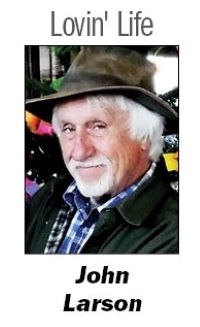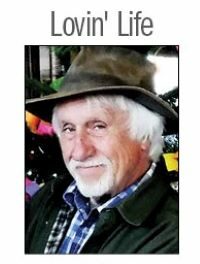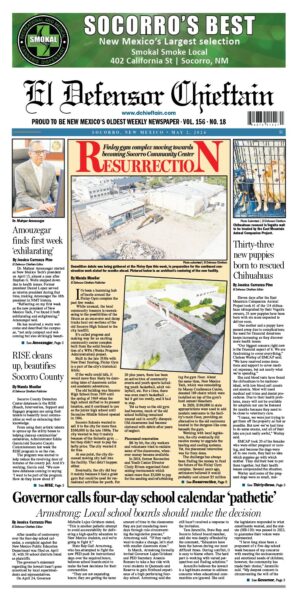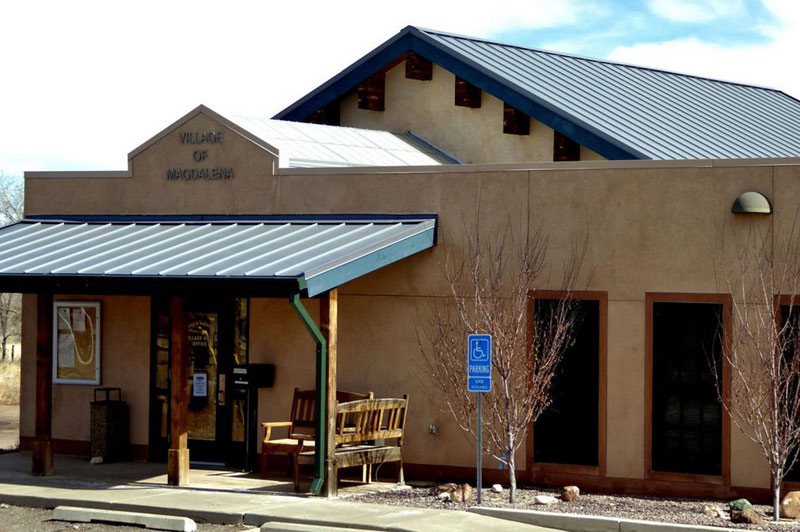
Of course, for me, some of the best stories of that project are those personal reminiscences of local folks, many of whom are still with us. It’s said that everyone in Socorro County was freaking out that morning.
The late Albuquerque Journal sportswriter Ben Moffett was just a young’un in San Antonio at the time, and a few years ago, when we were working together at the Mountain Mail, he informed me he may have been the only person to sleep through the blast.
“But I remember it vividly,” Ben related. “My parents, John and Regina Moffett, ran from the kitchen to where I was asleep and woke me up to see if I was safe. I was a month short of six years old, but I remember the panic in their eyes, something I had never seen before. Later in the day, we went to Socorro to peddle vegetables house-to-house and it was all anyone could talk about.”
After that, the government bought up two carloads of Hereford cows from nearby ranches and shipped them to Knoxville, Tennessee, where they were kept for testing. The feds claimed they were all OK.
There was, of course, the story of the black cat out there at White’s Store in Bingham. It was white on one side and black on the other and was sold to a tourist for five dollars. Leastwise, that’s the way I heard it.
I’m just wondering if the movie will feature those hamburger lunches Oppenheimer and fellow physicists had at the Owl Bar. Rowena Baca can tell you all about how her dad served the so-called “prospectors” in 1945. I don’t know if the movie people got permission from the Army to film at the Trinity Site, but if you can see the Oscura Mountains in the background, maybe they did.
Speaking of movies, last weekend I was re-watching my DVD-transferred-from-VHS copy of the film that Matt Middleton made in 1985 about Magdalena called “Way Out There.” It was first aired back then on KNME-TV, and it actually won a New Mexico AP award for Best Documentary.
Aside from some history of the area and reminiscing about cattle drives from now-departed cowboys, Matt throws in some shots of what the Old Timers parade looked like that year. There were the floats and old cars and horseback riders, but there was also a herd of steers in a mini-cattle drive right down First Street. Luckily there were no stampedes, but after it was pointed out that although it was apropos to the event, it might pose bad news for little kids darting out looking for candy, they stopped doing it.
Anyway, if you haven’t seen the one-hour film, bits and pieces of it are on YouTube. If nothing else, one can get a glimpse of Magdalena 40 years ago.
Still, I imagine there are not much more than a handful of longtime Magdalenians that could walk down Main or First streets and point out where all the businesses that have burned down used to be.
Thankfully, some of the oldest structures still stand, like the Bank of Magdalena building and the rest of that building north. Then there are the two hospitals; the 1920s-era Butterfield Hospital, now the Western Motel, and the Osteopathic Hospital from the 1940s at Second and Main, formerly a drug store, undertaker’s establishment and fire station. A third hospital, at Second and Spruce, shared its building with the U.S. Forest Service. Somebody lives there now.
But gone are the original Magdalena Hotel, California Hotel, Wilson Hotel, and Aragon Hotel, which burned down in 1953 along with the Becker-MacTavish Store and half of that block of North Main. The Hammond Hotel was lost to fire in 1965, and the Aragon movie theater and Knights of Pythias Hall burned in 1968.
Luckily, other remnants of the village’s heydays still exist; the Santa Fe train depot, Salome’s store, the Ilfield building, the stockyards, the Ocean-to-Ocean garage, the original jailhouse on Elm Street, and who knows how many houses that date back well before the turn of the 20th century.
To digress one more time, last Friday marked another auspicious date in history. Sliced bread was offered to the public for the first time on July 7, 1928, and forever more, it became the standard by which we measure the proverbial best thing.
I’m wondering what the best thing before sliced bread was. Bread? Anybody? Bueller?


















